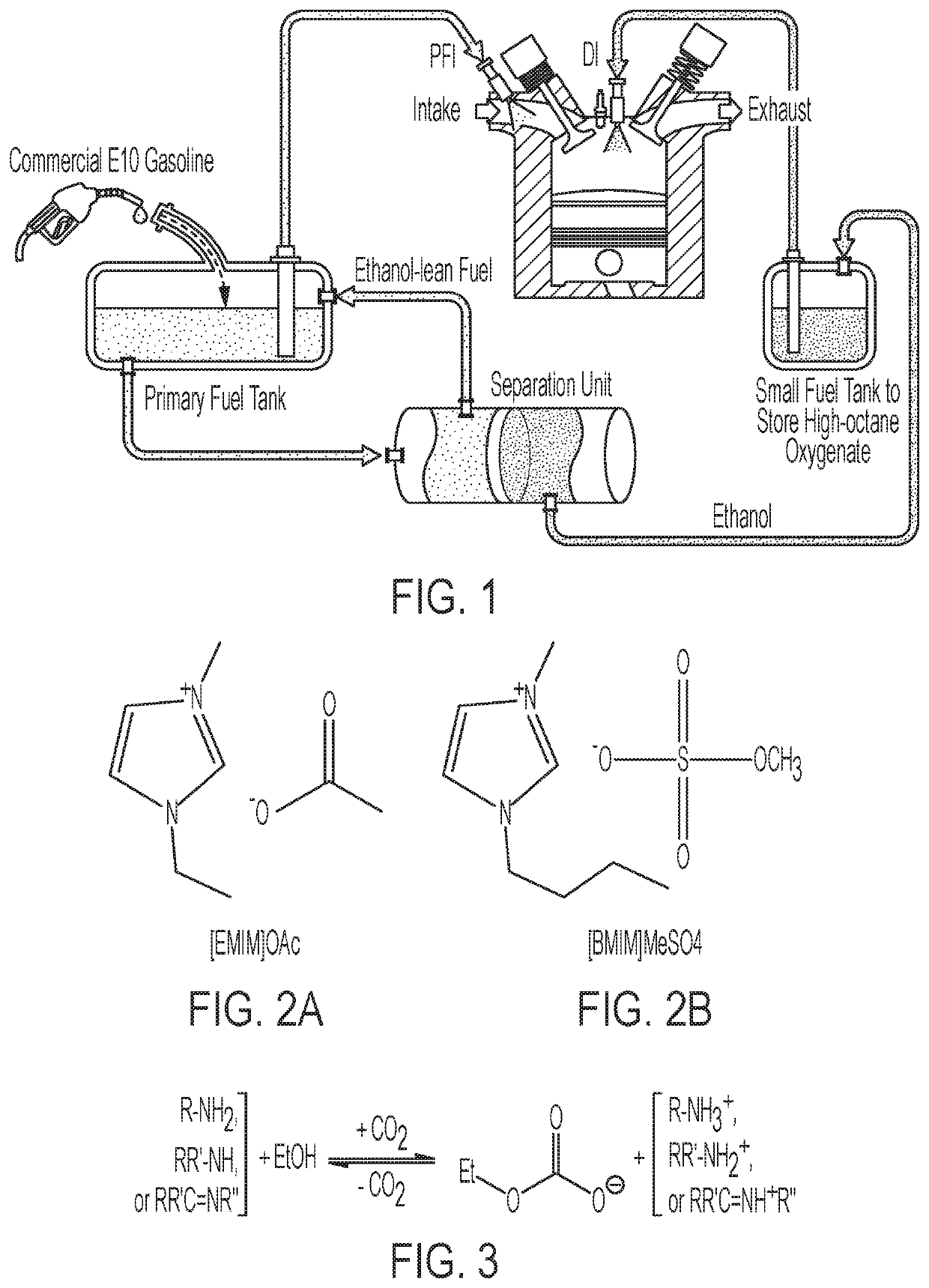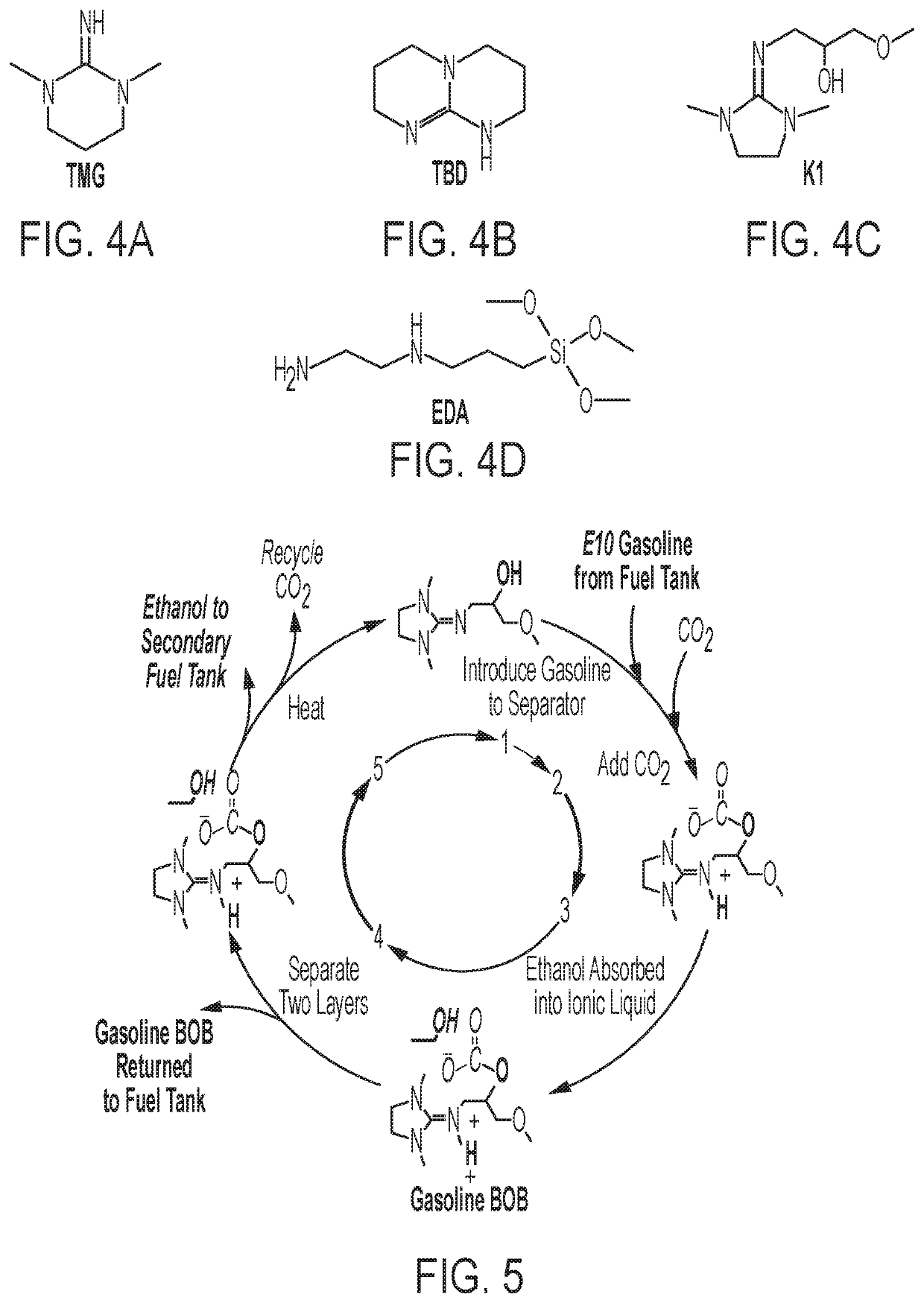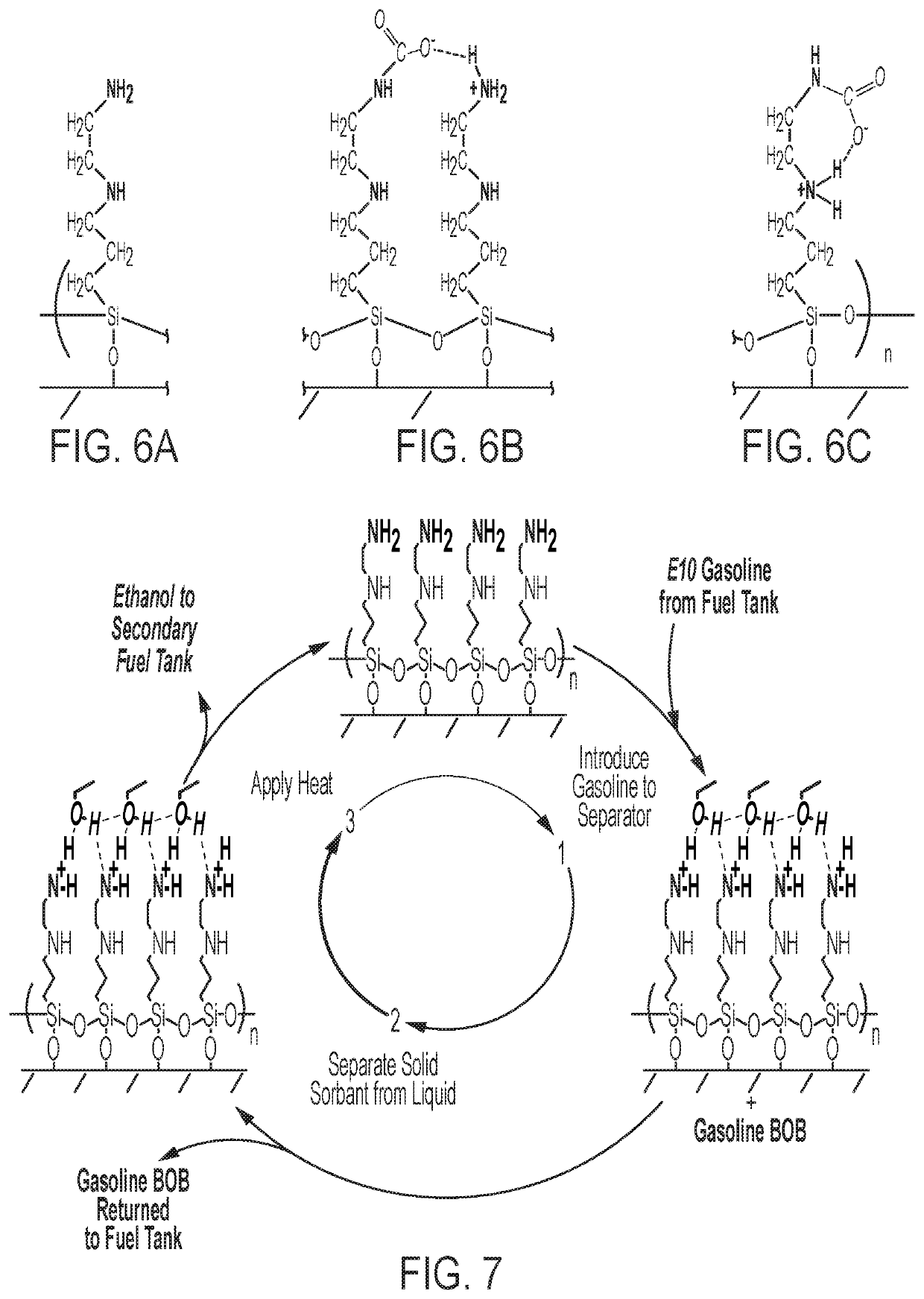On-board separation of oxygenates from fuels
- Summary
- Abstract
- Description
- Claims
- Application Information
AI Technical Summary
Benefits of technology
Problems solved by technology
Method used
Image
Examples
examples
[0052]General Procedure: Unless otherwise noted, all reactions were carried out in a nitrogen glovebox using a 10 mL Schlenk flask charged with the sorbent material under study. Gasoline and other reagents were degassed using three freeze-pump-thaw cycles, stored and used in an inert atmosphere glovebox. CO2 was introduced to the reaction flask by freezing the solution with liquid nitrogen, evacuating the headspace, warming the flask to ambient temperature, and adding CO2 until the total pressure achieved was 1.2 atm. Constant CO2 pressure was maintained over the course of the reaction. When reactions with CO2 were not necessary, reactions were carried out under an inert N2 atmosphere. Initial experiments were performed over a 1 h time frame for all bases, and subsequent experiments were carried out for 15 min. Unless otherwise noted, the absorbed or adsorbed alcohol was recovered via short-path distillation with the distillation flask heated using an oil bath and the receiving flas...
PUM
 Login to View More
Login to View More Abstract
Description
Claims
Application Information
 Login to View More
Login to View More - R&D
- Intellectual Property
- Life Sciences
- Materials
- Tech Scout
- Unparalleled Data Quality
- Higher Quality Content
- 60% Fewer Hallucinations
Browse by: Latest US Patents, China's latest patents, Technical Efficacy Thesaurus, Application Domain, Technology Topic, Popular Technical Reports.
© 2025 PatSnap. All rights reserved.Legal|Privacy policy|Modern Slavery Act Transparency Statement|Sitemap|About US| Contact US: help@patsnap.com



